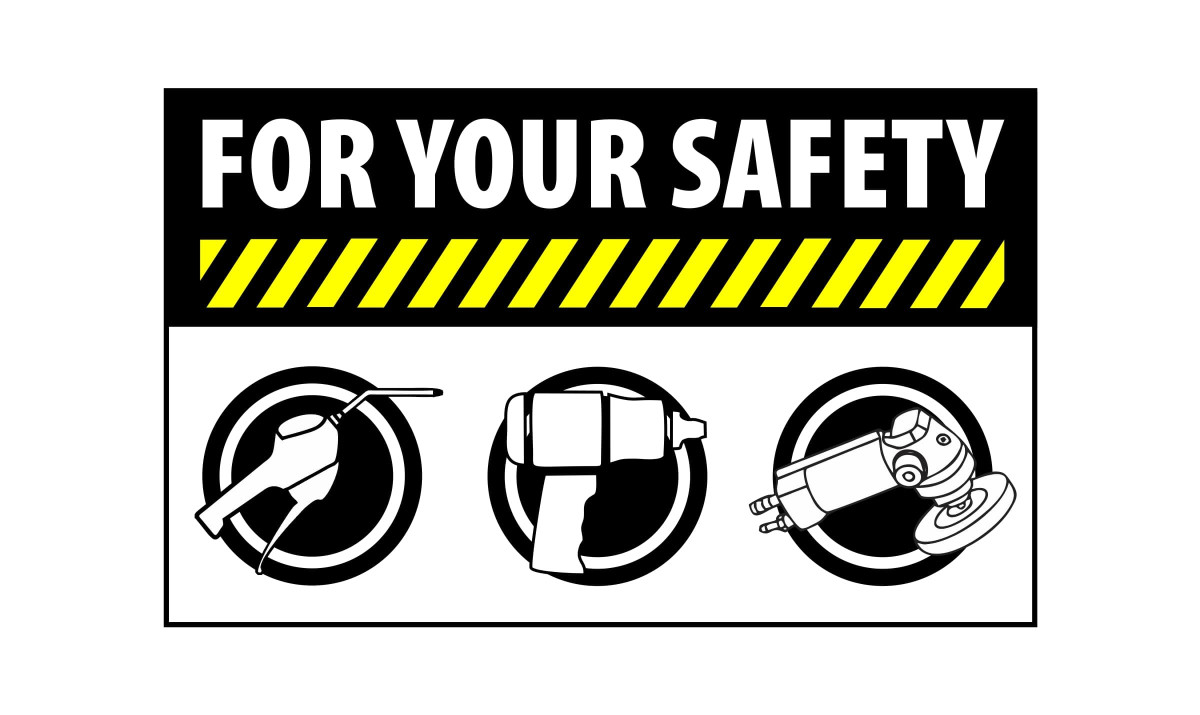
Consider safety when operating pneumatic/air tools.
 Pneumatic tools, powered by compressed air, can be a useful and portable addition to electrical tools on
construction sites, in industrial workshops, and at any work site where power tools are used. The air
compressors that power pneumatic tools must be used correctly to ensure the safety of all workers on the job
site.
Pneumatic tools, powered by compressed air, can be a useful and portable addition to electrical tools on
construction sites, in industrial workshops, and at any work site where power tools are used. The air
compressors that power pneumatic tools must be used correctly to ensure the safety of all workers on the job
site.
Common pneumatic tools used on the job include nail guns, staple guns, drills, riveting guns, paint sprayers, sanders, grinders, wrenches, buffers, and jackhammers, but the list of available air-powered hand tools is endless.
All workers who are authorized to use pneumatic tools should be trained on safe tool operation including inspection, compressed air hazards, proper PPE (personal protection equipment) requirements and tool storage.
Air compressors can be affected by changes in moisture, temperature, and its position in the workshop or environment. Perform a basic safety check at the beginning of every shift or before using any pneumatic tools for the first time each work day.
- Check gauges, connectors, hoses and guarding during the inspection.
- Check hoses regularly for cuts, bulges, kinks, or deterioration. Tag and replace, if defective.
- Do not use any pneumatic tools, hoses, air compressors or attachments if they appear to be damaged or seem to be failing.
Injury
- Consider getting hit by an attachment or fastener that flies off can cause serious injury. Pointing tools at people and avoiding stepping on connectors in the line are important factors to be observed. A hose that becomes disconnected while still under high pressure can whip around wildly and strike co-workers in the area.
- Always operate air compressors in a well-ventilated area away from combustible materials. The compressor pump generates heat similar to an air-cooled car or motorcycle engine, therefore ventilation is crucial. Never place objects on or against the air compressor that could restrict airflow.
Always wear appropriate PPE when working when pneumatic tools.
- Pneumatic tools can be noisy so it is important to wear hearing protection when using air-powered tools or when working in the area where they are used regularly.
- Eye protection is an important requirement, and head and face protection is recommended for operators of pneumatic tools.
- Wear gloves when using pneumatic tools to protect your hands.
- Dust masks should be used when using tools that create dust and fumes in the work area that may be hazardous.
- When pneumatic tools are used in areas where others are working, consider adding screens or shields to protect other employees from flying fragments, chips, dust, and excessive noise.
- Cleaning with compressed air is dangerous. The use of compressed air to blow debris or to clean dirt from clothes is not recommended.
Follow the standards and obey rules
Familiarise yourself with all rules and regulations and observe all these rules to prevent injury and reduce risk in the workplace. Needless to say, expensive claims and loss of life are not something taken lightly.
- Do not operate any pneumatic tool at a pressure above the manufacturer's rating
- Use hoses and fittings that have a pressure rating equal to or greater than the maximum pressure of the air compressor.
- The compressed air shut off valve should always be visible and within reach.
- Never point a pneumatic tool or nozzle at any part of the body or at other people.
- Only use the attachments that the manufacturer recommends for the tools that are being used.
- Keep pneumatic tools clean, lubricated and maintained according to the manufacturer's instructions.
- Never carry a pneumatic tool by its hose.
- Air compressors should only be plugged into outlets with proper grounding (earth).
